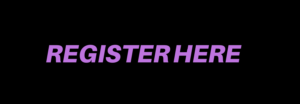Join us for an opening reception to celebrate and kick off our fall/winter exhibition with curator and artist Nnaemeka C. Ekwelum!

…Notes on Collaborative Friendship (First floor Burroughs Gallery) is the culmination of Nnaemeka C. Ekwelum’s doctoral research on friendship, artistic collaboration, and decolonial Black political thought. Through a series of intentional and creative partnerships between him and eight other US-based artists/scholars, this project experiments with the rigor of collaborative friendship as a creative methodology in contemporary art making and knowledge production. It also affectively explores alternative ways to represent Black Studies scholarship within and beyond academic spaces of learning.
Collaborative artist interventions in the exhibition include: Lishan AZ, Shenequa “SHENEQUA” Brooks, Stephen Hamilton, Noor Jones-Bey, Mercy Emelike, Carmen Neely, and Cordelia Rizzo.
*Co-sponsored by Northwestern University’s Department of Black Studies.

Nnaemeka (Emeka) C. Ekwelum is a transnational and multidisciplinary researcher, educator, and artist/curator from Boston, MA. He currently lives in Chicago, IL, where he is a Ph.D. candidate in Black Studies (African American Studies) at Northwestern University. Emeka’s scholarly and creative interests converge at the intersection of history, critical theory, creative expression, curatorial practice, and political education. His dissertation project–“On Artistic Collaboration & Decolonial Black Political Thought”–examines the critical role(s) of beauty, wonderment, and friendship in contemporary and craft art collaborations between and amongst Black creatives. Prior to returning to graduate school, Emeka held a professional career as an educator in his home state of Massachusetts, formally and informally working with youth and adult learners across a range of cultural contexts in the Boston/Greater Boston Area. His teaching philosophy, interpersonal values, and political commitments are a reflection of his academic training in Comparative Ethnic Studies (Columbia University, B.A.) and Arts in Education (Harvard University, Ed.M.), drawing on theories of Black feminist and political thought to interrogate ideas of power, privilege, and personhood through art and artmaking.



